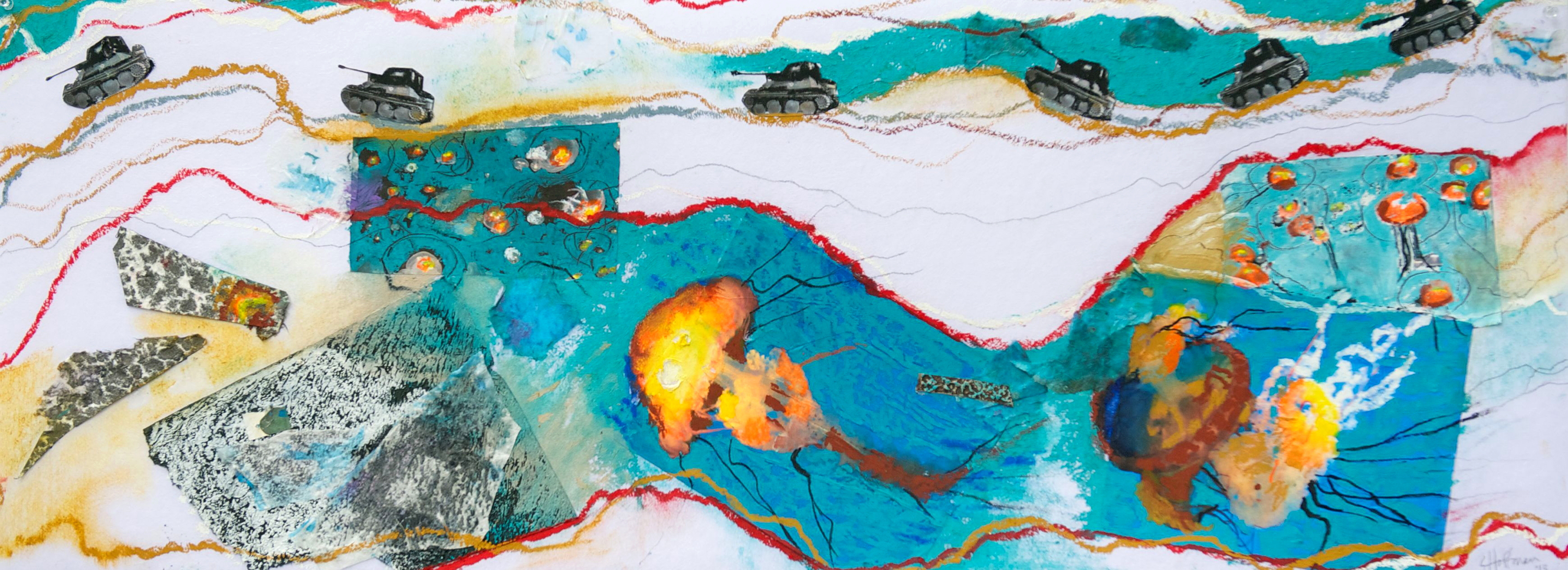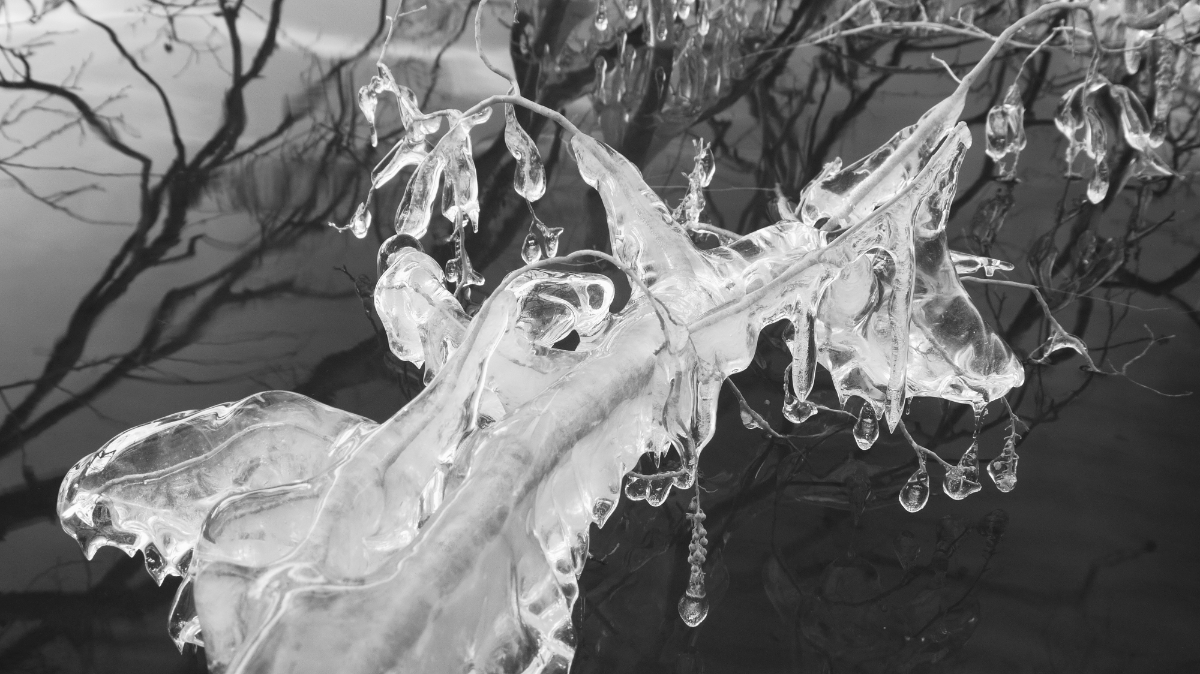
Vibrant paintings of the lower Connecticut River share space with images of polluted waterways in India and mixed-media works evoking future water wars and the power and physical properties of water in an exhibit that opened last week at The William Benton Museum of Art.
“Unfiltered” features the works of 11 contemporary and six 19th and early 20th century artists. But it is not only a vehicle for depicting water in disparate settings and significance for visitors to the University of Connecticut museum, located at the main campus in Storrs. As a collaboration of the museum with numerous UConn departments and programs, “Unfiltered” is also being incorporated into a climate change adaptation class new this semester that is a joint effort of Connecticut Sea Grant, located at the Avery Point campus in Groton, with the Center for Land Use, Education and Research (CLEAR), and programs in environmental studies, environmental sciences and engineering.
“One of the extra-credit assignments for the class is for the students to pick three of the paintings that are relatable to climate change issues, and identify those issues,” said Juliana Barrett, associate extension educator at Connecticut Sea Grant. “It could be anything from sea level rise to environmental justice. This is just another medium to open the discussion about climate change and learn about it.”
Barrett is teaching the class at the Storrs campus with Bruce Hyde, assistant extension educator with CLEAR, to 15 graduate and undergraduate students. Titled “Climate Resilience and Adaptation: Municipal Policy and Planning,” it will teach students about the local, practical impacts of climate change in Connecticut and assign them service learning projects in coastal communities. After class work this fall, the “Climate Corps,” field work component will happen in the spring. The course is supported by a grant from the UConn Provost’s Office.
“The first lecture we talked about climate change as part of their entire life, no matter what field they’re going into,” said Barrett, adding that the course is bringing together students from a variety of majors, including environment studies, environmental sciences, environmental engineering and landscape architecture.
For the exhibit, Barrett recommended several of the works displayed there and contributed to the interpretive text to highlight the relevance of the images to climate change.
“I don’t think any of the works were created to say something about climate change, but we can draw things out of them,” she said.
Five of the largest paintings on display are by Chester artist Leif Nilsson. His vibrant scenes of the lower Connecticut River, including Griswold Point in Old Lyme, Selden Creek in Lyme and North Cove in Essex show rare and fragile habitats that face significant challenges from sea level rise and warming temperatures.
Nancy Stula, executive director of The Benton, said “Unfiltered” is the latest of several exhibits since she came to the museum in 2013 connecting the arts and sciences as a way of making the museum more relevant to students.
“This is something we’re trying to make a habit of doing,” she said. “One of our goals is to integrate the museum in with the rest of the community by collaborating with as many departments as possible.”
Collaborators with The Benton on “Unfiltered” include the UConn departments of Natural Resources and the Environment; Civil and Environmental Engineering and Marine Sciences; as well as these UConn programs: the Institute of Water Resources; CLEAR, Connecticut Sea Grant and Connecticut NEMO.
It will be on display through Dec. 17. A portion of the exhibit is expected to travel to Avery Point and the UConn Stamford campus.
The Benton is located at 245 Glenbrook Road on the main UConn campus in Storrs. It is open Tuesday through Friday from 10 a.m. to 4:30 p.m. and on weekends from 1 to 4:30 p.m. Admission is free.
For information, visit: benton.uconn.edu

Ornament, photograph by Diana Barker Price.